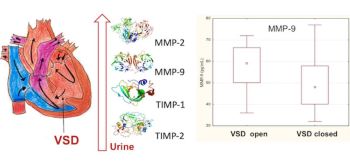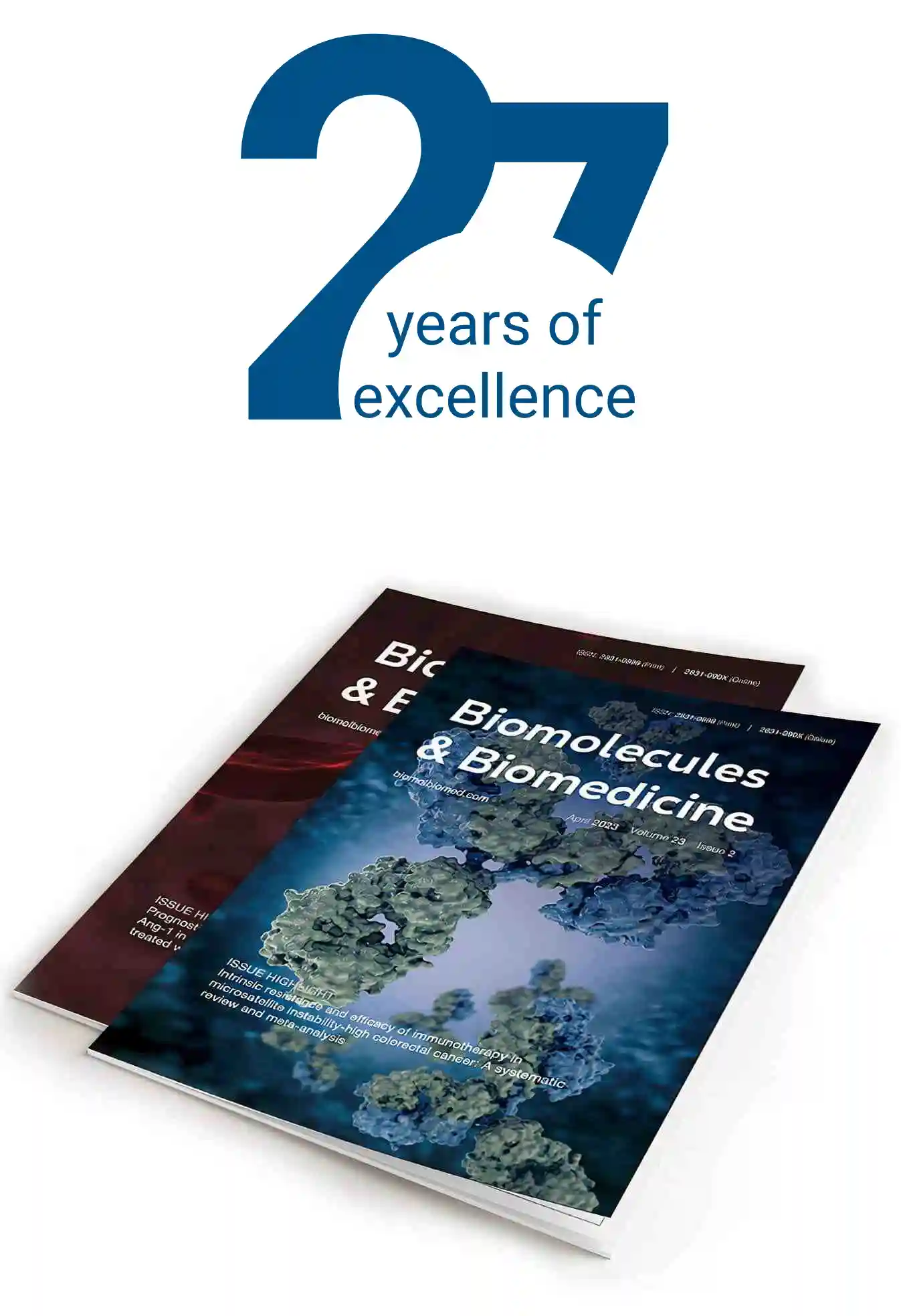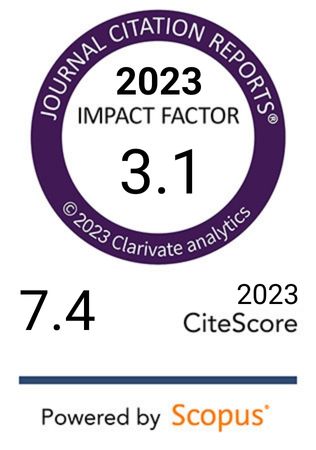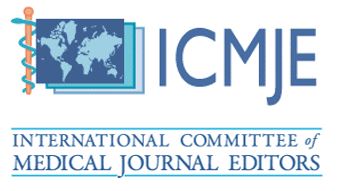Role of MMP-2, MMP-9, TIMP-1, and TIMP-2 in children with ventricular septal defect
DOI:
https://doi.org/10.17305/bb.2024.11162Keywords:
Ventricular septal defect, matrix metalloproteinases, tissue inhibitor of metalloproteinases, urineAbstract
Ventricular septal defect (VSD) is the second most common congenital heart anomaly. In most cases, it closes spontaneously in the first year of life, but it sometimes requires surgical closure due to the risk of serious complications. This is why it is important to identify markers that could help predict its course. Findings that matrix metalloproteinases (MMPs) and tissue inhibitors of metalloproteinases (TIMPs) play an important role in the cleavage of the extracellular matrix were the reasons to investigate their role in cardiogenesis. In prior studies on this topic, their concentrations were studied in the blood. The aim of this prospective study was to investigate the role of MMP-2, MMP-9, TIMP-1, and TIMP-2 in the etiology and pathophysiology of VSD using urine samples, as an innovative non-invasive approach, and the enzyme-linked immunosorbent assay (ELISA) method. It involved 52 children with isolated VSD and 20 healthy children up to one year of age. We found that these MMPs and TIMPs are significantly (P = 0.000) higher in children with VSD, and the correlations between their concentrations and the size of the defect are positive, especially for MMP-9 and TIMP-1. MMP-9 was significantly (P = 0.044) higher in cases in which VSD did not close in the first year of life compared to cases in which it closed. Our results suggest the role of MMP-2, MMP-9, TIMP-1, and TIMP-2 in the aetiopathogenesis of VSD and that their urinary concentrations, especially of MMP-9, in combination with echocardiographic and clinical monitoring, could be useful in predicting its natural course.
Citations
Downloads

Downloads
Published
Issue
Section
Categories
License
Copyright (c) 2024 Nina Maric, Ines Mrakovcic Sutic, Jelica Predojevic Samardzic, Dario Djukic, Aleksandar Bulog, Ivana Sutic

This work is licensed under a Creative Commons Attribution 4.0 International License.









